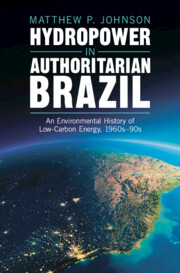In May 2013 the Democratic Republic of the Congo (DRC) announced that construction of the world’s largest hydroelectric project will begin in October 2015. Upon completion, according to the DRC, the project will bring electricity to half the African continent. With funding from South Africa, the World Bank, the African Development Bank, and others, the U.S.$80 billion Grand Inga Hydroelectric project will construct a 44,000 megawatt (MW) dam anchored to a new transmission network able to distribute electricity to all four of sub-Saharan Africa’s regional electricity power pools. While the dam promises to bring electricity to many millions of Africans who currently lack access, the project also poses risks to the citizens and environment of the DRC. To assess the complex tradeoffs, this article evaluates four dimensions that are part of an energy security framework: availability, affordability, efficiency, and stewardship. In doing so, it explores some of the governance challenges that arise in managing such a “mega-project.” The analysis also reveals tensions between national and regional energy security. It presents evidence that, under certain assumptions, the pursuit of enhanced security at the regional level may result in a net security loss for the DRC. Finally, the article provides suggestions for enhancing the decision-making process of those designing related national and regional energy strategies.


